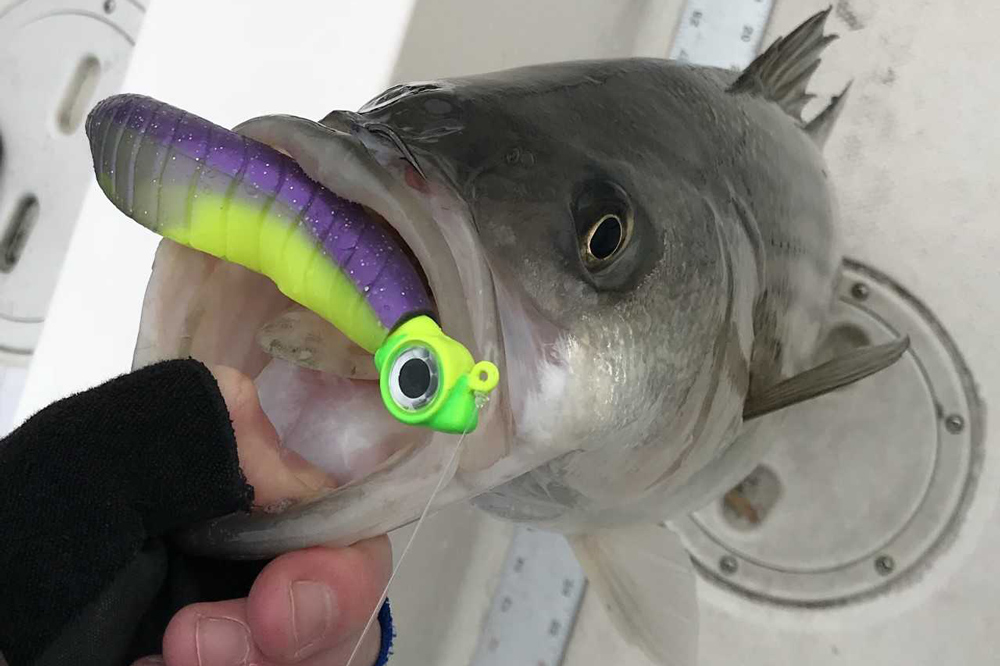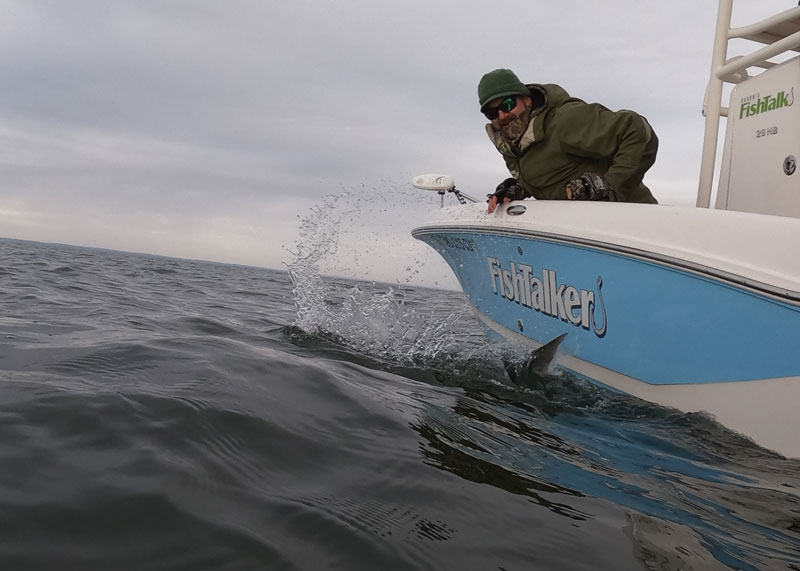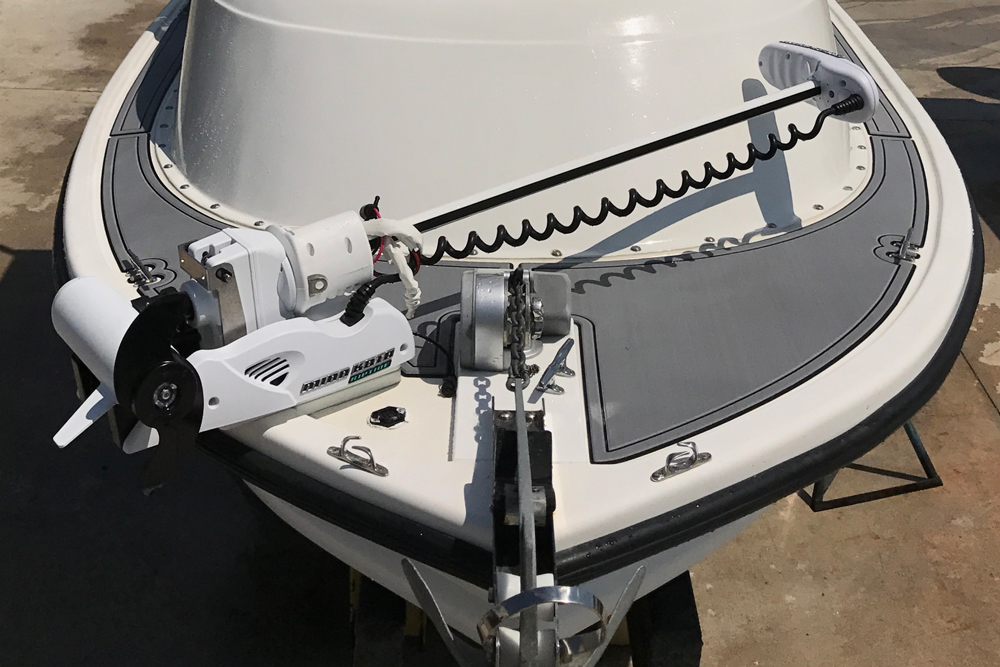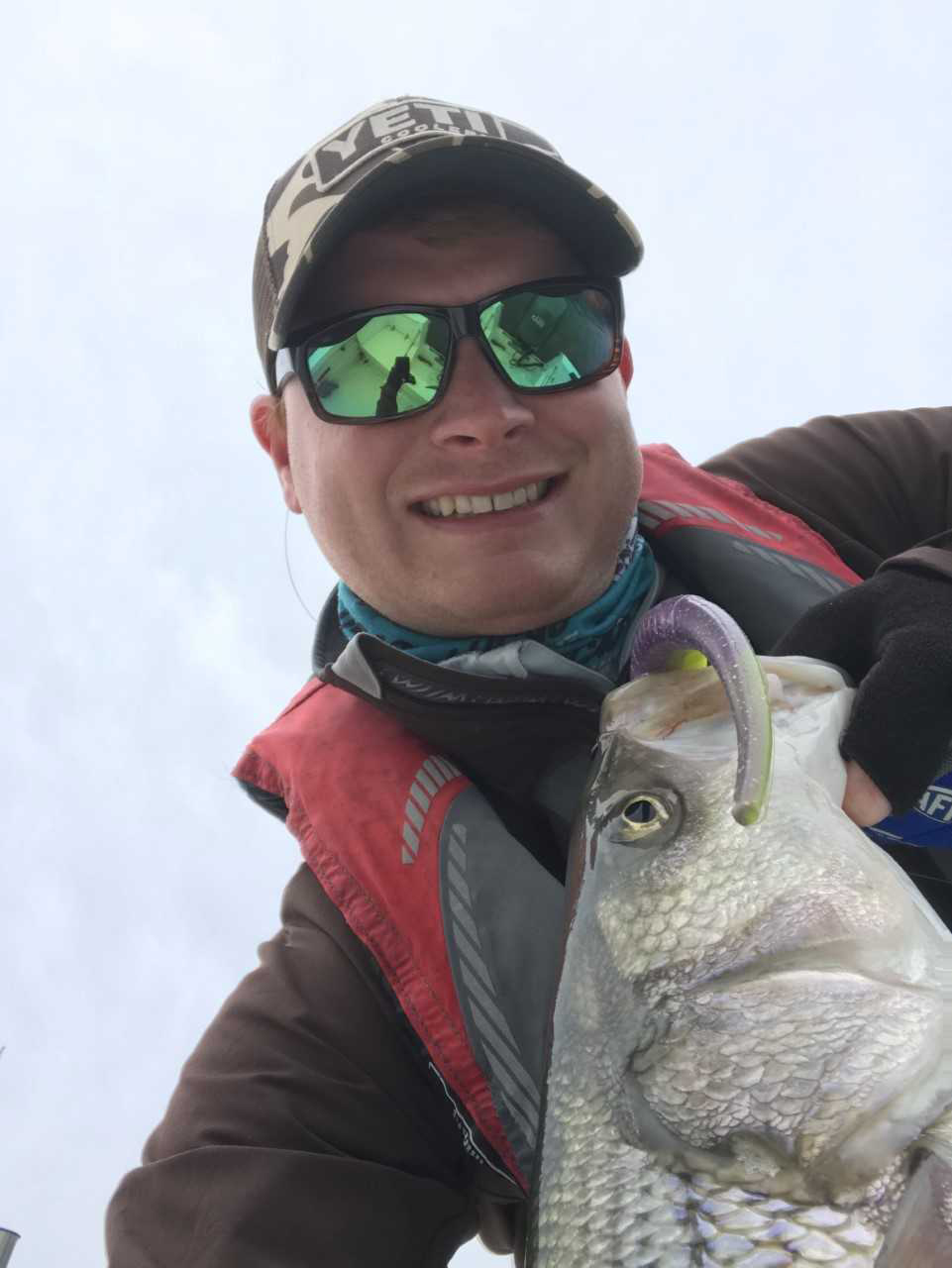There are all kinds of wintertime opportunities for Mid-Atlantic anglers, ranging from ice fishing to trout fishing to tautog fishing. But in our neck of the woods, rockfish - AKA striped bass - take the spotlight. And by this point in the winter many of us are Jonesing for the feel of a rod bent under striper-power. Lucky for you and I, during windows of relative warmth there are plenty of options for catch and release rockfish angling.

Before we go any further: when fishing purely on a catch and release basis, all of us should take care to make the safe release of those stripers a top concern. These fish aren’t going into the cooler, so their well-being is a priority. That way we can catch more stripers in the future – woohoo! First and foremost, using artificial lures is a no-brainer. No matter how careful you are, bait fishing tends to deep-hook more striped bass that lures fishing, so in this case it only makes sense to stick with artificials. Secondly, while stripers have extremely high survivability rates in cold water, we still need to take care when handling these fish. Holding larger ones by the jaw without supporting their mid-section can cause internal damage, and holding them vertically while lipped can stress the jaw hinges. The fish should never be handled with dry hands or a dry towel, which removes their protective coating of slime. Nets that don’t have a rubberized coating can also rub away their slime. And whenever possible, simply un-hook and release the fish without even removing it from the water – the ideal way to set a striper free without harm. Please, please, please take a look at Set the Catch and Release Bar for some of the critical details on how to handle these fish and let them go unharmed.

Okay: ‘nuff said. Let’s get down to the how-to brass tacks of winter striper fishing.
Keys to Successful Winter Striped Bass Fishing
Two important factors to keep in mind when hunting stripers in uber-chilly weather are lure selection, and lure presentation. Lure selection can be summed up by saying that bigger is usually better. At this time of year the fish want to expend as little energy as possible and they aren’t likely to go chasing after a morsel – they want a big meal. Even for school-sized fish, a standard-sized plastic in the five- to six-inch range is often too small to generate much interest. Eight-, nine-, or 10-inch tails are often much more effective.
Presentation is also critical, but the most effective presentation is not what one might assume. Yes, the fish are moving slowly, but hovering a lure or lethargically moving it through the water column isn’t usually the best move. You still need to trigger the fish’s gut instinct to attack, which is best done by convincing it that dinner is about to escape – the up-swing while jigging should still be fairly quick. Where you need to slow things down is on the vertical plane. Few cranks should take place, and they should be at slow speed, during the retrieve. Think: more hop, less swim. All of that said, note that there will be times when a slow, sweeping jigging motion works best. This happens less often, but remember, every day is different and you never know what the fish will prefer from one to the next. You can see just how we work those lures in this video about targeting the monster winter stripers that sometimes visit the Chesapeake Bay during the winter months.
What about vertical presentations? These do work sometimes, more often with jigging spoons (swap the trebles for singles) than with plastics. If, that is, you can keep your boat positioned perfectly above the fish. Even when casting and retrieving, boat position can be critical. These fish move around a lot less than they do in the summer, and discovering their location is often less of a challenge then tempting them into biting. Anglers on boats rigged with bow-mounted electric trolling motors that can offer virtual anchoring systems, like a Minn Kota with Spot-Lock, have a serious leg up in this regard. Press a button on the i-Pilot remote and the boat hovers in place, allowing you to work a cluster of fish over and over again until you can tempt them into striking. If you can’t Spot-Lock your boat the next best option will be drifting. In this case, be sure to zoom in your chartplotter as tightly as possible to try to keep your drift pattern consistent in areas you’ve located fish. With the range zoomed out, it’s easy to think you’re repeating a drift in the exact same spot when you’re actually well off the mark. Anchoring may also be a possibility, but it eliminates mobility and also can be very noisy.

Winter Striper Fishing Locations
It’s often said that you can’t catch fish where there aren’t any fish, and this is certainly true. Warm-water discharges are naturally a good winter destination, and they draw much of our angling attention through the winter. But the other places you might find stripers in the winter months may surprise you. The fish’s exact locations and abundance will, of course, vary from season to season. But many winters you can find fish throughout the Chesapeake’s tributaries in one of two places: sun-warmed shallow water adjacent to deeper waters, or around deep-water structure.
Flash back to the winter of 2017. There were some serious cold spells (remember the “bomb cyclone?”) yet every month of the winter we received photo-documented reader reports of stripers being caught in areas ranging from the Patapsco, to the Choptank, to the Rappahannock. Angler Kevin Thomas, fishing in the lower Severn river, proved to be one of the most dedicated anglers around and he caught rockfish with spectacular consistency right through the winter.
“Maybe one out of four was in deep water, generally around 25 feet near structure, but most of the fish I caught were coming out of deep water and going into the shallows where sunlight had been hitting all day,” Thomas says. “I fish mostly during the warmer days in the afternoon, when the water has had time to heat up. I’m casting into five feet of water and retrieving back to the boat. The fish usually hit on an extremely slow retrieve, bouncing it off the bottom. Big lures (a 10-inch BKD if often a great pick) and dark colors usually work best. The bites are also very sluggish, and you feel like you’re waking up the fish when you hook them,” he explains.

Speaking of waking up, maybe it’s time for the rest of us to open our eyes – because setting aside blizzards and bomb cyclones, you can enjoy catch and release striper fishing on the Chesapeake all year long.
In Catch and Release Off-Season Stripers, Part II, guest author Kevin Thomas shares more detailed info on how and where you can get those off-season stripers snapping!
Get It While it’s Hot: Calvert Cliffs Nuclear Powerplant Striped Bass Fishing
What about warm water discharges, and the mother of them all, Calvert Cliffs Nuclear Power Plant (CCNPP)? Wait a sec – SHHHH! Don’t tell everyone about the CCNPP!
The CCNPP went into service in 1975 and has been pumping warmed water into the Middle Bay ever since. This spot is not exactly a secret. The truth of the matter is that people have been screaming “spot burn” or the equivalent thereof since about 1976, whenever someone so much as mentions fishing there. It’s a difficult place to access during the winter months and like any other hotspot (pun intended) the bite here ranges from awesome to nonexistent. As a result, the CCNPP may see little pressure for a month, a season, or even a few seasons in a row. A handful of adventurous anglers – who deserve serious cred for putting in the effort to probe these waters even when the fishing has been slow – discover that the bite’s back on, and generally try to keep it hush-hush for as long as possible. Some get bent out of shape when the spot gets crowded, as it eventually always does. The exact same thing used to happen with the Brandon Shores power plant near Baltimore (thought this spot hasn’t been as reliable since the 90s), the same was true of Peach Bottom at one point in time, and also of the Hot Ditch until Dominion turned off the spigot there.

Generally, by the time word of this bite makes it to us at FishTalk or it appears online, those hard-cores who have been exploring there through the slow periods have enjoyed good action for a week or two. I applaud them for their efforts, and while no one owns that water, I also understand why anglers may get upset when a crowd or even a single inexperienced angler ruins the bite for everyone. So for those who aren’t well versed in this specific fishery, here are a few key points everyone needs to know. Hopefully, keeping them in mind will help all of us enjoy bent rods and prevent any angst:
- When there are big fish present, remaining stealthy is critical – when they hear boats and people they spook easily, and the bite shuts down. Yelling, stomping on the deck, or slamming a hatch can end the action for everyone in a heartbeat.
- Staying out of the outflow and keeping your boat on the periphery while casting back into the moving water will help reduce the amount of noise created directly over the fish’s heads.
- When motoring up to the outflow, circle wide and stay well outside of the moving water and the boats drifting down its edge. Always do so at pre-planing speeds and slow down a bit more if you're throwing a wake, so you don't rock all the other anglers.
- Don’t anchor. Anchoring creates a ton of noise — and there’s a fair chance you’ll never manage to pull that anchor back up from the snaggy bottom. This is another scenario where having Spot-Lock can pay off, since it allows you to keep your boat in position yet retain the flexibility to adjust the position when appropriate.
- Shifting an outboard into gear (either forward or reverse) creates a loud metal-on-metal “thunk” that’s a prime fish-spooker. The same goes for engaging an engine’s starter. So when drifting it’s best not to try to reposition the boat with an outboard until you’re well away from the fish. Two-stroke outboards, which make a serious racket underwater when idling, should be shut off whenever possible. See Spooking Fish with your Boat to learn more about how we accidentally alert those fish to our presence.
- Try to stay outside of casting distance of another boat. If you can hit it with your jig, you’re probably too close. That said, different boats drift at different rates and it's impossible to always maintain a measured distance. When you feel someone else has come too close, remember that they may well have positioned their boat with respect but got caught by the wind or current.
Editor's note: This article was originally published in January of 2019 and was last updated in January of 2025.